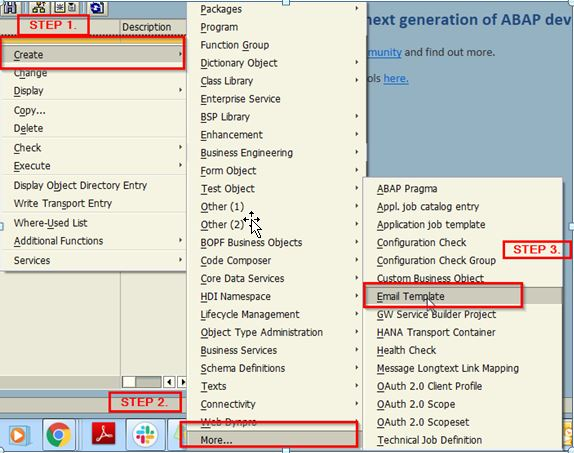前言
在 C 语言中,函数指针的回调是一种强大的编程技术,它允许我们在特定的事件发生或特定的条件满足时,调用由用户定义的函数。这种机制增加了程序的灵活性和可扩展性,使得代码更具通用性和可重用性。
一、函数指针的概念
函数指针是一个指向函数的指针变量。它存储了函数的地址,通过这个地址可以调用该函数。
函数指针的声明形式如下:
返回值类型 (*指针变量名)(参数列表);
例如,定义一个指向返回值为 int 类型,有两个 int 类型参数的函数指针:
int (*func_ptr)(int, int);
二、回调函数的概念
回调函数是由调用者提供给被调用者的函数指针,当特定的事件发生时,被调用者会调用这个回调函数来通知调用者。
三、函数指针回调的优势
-
解耦代码
通过使用函数指针回调,可以将主逻辑与具体的处理逻辑分离,使得代码更易于理解和维护。 -
增加灵活性
可以在运行时动态地决定调用哪个具体的函数,而不需要在编译时就确定。 -
提高代码复用性
可以将通用的框架与特定的功能实现分开,相同的框架可以使用不同的回调函数来实现不同的行为。
四、函数指针回调的实现步骤
-
定义回调函数
首先,需要定义一个符合特定签名的函数,作为回调函数。 -
声明函数指针
声明一个指向回调函数类型的指针。 -
将函数指针传递给调用函数
在需要进行回调的地方,将函数指针作为参数传递给相应的函数。 -
在被调用函数中调用回调函数
在接收到函数指针后,在合适的时机通过函数指针调用回调函数。
五、示例
以下是一个简单的示例,展示了如何在 C 语言中实现函数指针的回调。
#include <stdio.h>
// 定义回调函数类型
typedef void (*CallbackFunction)(int);
// 回调函数实现
void myCallback(int value) {
printf("Callback received value: %d\n", value);
}
// 执行回调的函数
void performCallback(CallbackFunction callback, int data) {
callback(data);
}
int main() {
// 声明函数指针并指向回调函数
CallbackFunction ptr = myCallback;
// 调用执行回调的函数,并传递函数指针和数据
performCallback(ptr, 42);
return 0;
}
在上述示例中:
- 首先,定义了一个
CallbackFunction类型的函数指针,它指向一个接受一个int类型参数且无返回值的函数。 myCallback函数是具体的回调函数实现,它会打印接收到的值。performCallback函数接受一个CallbackFunction类型的函数指针和一个int类型的数据,在函数内部调用传递进来的回调函数,并将数据作为参数传递给它。- 在
main函数中,声明了一个函数指针ptr并将其指向myCallback函数,然后调用performCallback函数,并传递ptr和42作为参数,从而实现了回调。
六、更复杂的示例:排序算法中的回调
下面是一个更复杂的示例,展示在排序算法中如何使用函数指针回调来实现不同的比较策略。
#include <stdio.h>
#include <stdlib.h>
// 交换两个元素的位置
void swap(int* a, int* b) {
int temp = *a;
*a = *b;
*b = temp;
}
// 冒泡排序函数,使用回调函数进行比较
void bubbleSort(int arr[], int n, int (*compare)(int, int)) {
int i, j;
for (i = 0; i < n - 1; i++) {
for (j = 0; j < n - i - 1; j++) {
if (compare(arr[j], arr[j + 1])) {
swap(&arr[j], &arr[j + 1]);
}
}
}
}
// 升序比较函数
int ascendingCompare(int a, int b) {
return a > b;
}
// 降序比较函数
int descendingCompare(int a, int b) {
return a < b;
}
// 打印数组函数
void printArray(int arr[], int size) {
int i;
for (i = 0; i < size; i++)
printf("%d ", arr[i]);
printf("\n");
}
int main() {
int arr1[] = {64, 34, 25, 12, 22, 11, 90};
int arr2[] = {64, 34, 25, 12, 22, 11, 90};
int n = sizeof(arr1) / sizeof(arr1[0]);
printf("Original array: ");
printArray(arr1, n);
// 按升序排序
bubbleSort(arr1, n, ascendingCompare);
printf("Sorted in ascending order: ");
printArray(arr1, n);
printf("Original array: ");
printArray(arr2, n);
// 按降序排序
bubbleSort(arr2, n, descendingCompare);
printf("Sorted in descending order: ");
printArray(arr2, n);
return 0;
}
在这个示例中:
swap函数用于交换两个元素的位置。bubbleSort函数是冒泡排序的实现,它接受一个整数数组、数组的大小和一个函数指针compare,用于比较两个元素的大小。ascendingCompare和descendingCompare分别是升序和降序的比较函数。- 在
main函数中,首先定义了两个待排序的数组,然后分别使用升序和降序的比较回调函数对数组进行排序,并打印排序前后的数组。
通过这种方式,我们可以通过传递不同的比较函数来实现不同的排序顺序,而不需要修改排序算法的主体逻辑,体现了函数指针回调的灵活性和可扩展性。
七、回调函数中的错误处理
在回调函数中,进行错误处理是非常重要的。因为回调函数通常是在其他函数的上下文中被调用,错误信息的传递和处理需要特别注意。
#include <stdio.h>
// 定义错误码枚举
typedef enum {
ERROR_NONE = 0,
ERROR_INVALID_INPUT,
ERROR_OUT_OF_MEMORY
} ErrorCode;
// 定义回调函数类型,包含错误码返回值
typedef ErrorCode (*CallbackFunctionWithError)(int, int, ErrorCode*);
// 回调函数实现,处理错误
ErrorCode myCallbackWithError(int value1, int value2, ErrorCode* error) {
if (value1 < 0 || value2 < 0) {
*error = ERROR_INVALID_INPUT;
return ERROR_INVALID_INPUT;
}
// 正常处理逻辑
printf("Callback received values: %d and %d\n", value1, value2);
*error = ERROR_NONE;
return ERROR_NONE;
}
// 执行回调的函数,处理错误返回
void performCallbackWithError(CallbackFunctionWithError callback, int data1, int data2) {
ErrorCode error;
ErrorCode result = callback(data1, data2, &error);
if (result!= ERROR_NONE) {
printf("Error occurred: ");
switch (error) {
case ERROR_INVALID_INPUT:
printf("Invalid input\n");
break;
case ERROR_OUT_OF_MEMORY:
printf("Out of memory\n");
break;
default:
printf("Unknown error\n");
}
}
}
int main() {
// 声明函数指针并指向回调函数
CallbackFunctionWithError ptr = myCallbackWithError;
// 正常调用
performCallbackWithError(ptr, 5, 10);
// 错误调用
performCallbackWithError(ptr, -5, 10);
return 0;
}
在上述示例中:
- 定义了一个包含错误码返回值的回调函数类型
CallbackFunctionWithError。 myCallbackWithError回调函数在输入值无效时设置错误码并返回错误。performCallbackWithError函数在调用回调函数后,检查返回的错误码,并进行相应的错误处理。
这样可以在回调函数中有效地处理各种错误情况,并将错误信息传递回调用者进行适当的处理。
八、回调函数与多线程
在多线程环境中,使用函数指针回调需要注意线程安全问题。
#include <stdio.h>
#include <pthread.h>
// 共享数据
int sharedData = 0;
// 互斥锁
pthread_mutex_t mutex;
// 回调函数
void* myCallbackInThread(void* arg) {
pthread_mutex_lock(&mutex);
sharedData++;
printf("In callback: Shared data is now %d\n", sharedData);
pthread_mutex_unlock(&mutex);
return NULL;
}
// 线程函数
void* threadFunction(void* arg) {
// 调用回调函数
myCallbackInThread(NULL);
return NULL;
}
int main() {
pthread_t thread1, thread2;
// 初始化互斥锁
pthread_mutex_init(&mutex, NULL);
// 创建线程
pthread_create(&thread1, NULL, threadFunction, NULL);
pthread_create(&thread2, NULL, threadFunction, NULL);
// 等待线程结束
pthread_join(thread1, NULL);
pthread_join(thread2, NULL);
// 销毁互斥锁
pthread_mutex_destroy(&mutex);
return 0;
}
在这个示例中:
- 有一个共享的整数
sharedData和一个互斥锁mutex。 myCallbackInThread是回调函数,它在操作共享数据前加锁,操作完成后解锁,以保证线程安全。threadFunction是线程函数,它调用回调函数。- 在
main函数中创建了两个线程来执行threadFunction。
通过使用互斥锁来保护共享数据,确保在多线程环境中回调函数对共享资源的访问是安全的。
九、回调函数与异步操作
函数指针回调在处理异步操作时也非常有用。
#include <stdio.h>
#include <unistd.h>
// 异步操作完成的回调函数
void asyncOperationComplete(int result, void (*callback)(int)) {
printf("Async operation completed with result: %d\n", result);
callback(result);
}
// 异步操作完成后的处理回调函数
void handleAsyncResult(int result) {
printf("Handling async result: %d\n", result);
}
int main() {
// 模拟异步操作
asyncOperationComplete(42, handleAsyncResult);
return 0;
}
在上述示例中:
asyncOperationComplete函数模拟异步操作完成,并调用传递进来的回调函数callback来通知操作的结果。handleAsyncResult函数是处理异步操作结果的回调函数。
通过这种方式,可以在异步操作完成后及时进行相应的处理,而不需要阻塞等待操作完成。
十、总结
函数指针的回调是 C 语言中一种强大而灵活的编程技术,它能够实现代码的解耦、提高灵活性和可扩展性、增强代码的复用性。通过合理地设计回调函数和使用函数指针,可以编写出更优雅、更高效、更易于维护的 C 语言程序。无论是在简单的程序结构中,还是在复杂的多线程、异步操作和排序算法等场景中,函数指针回调都能发挥重要的作用。但在使用过程中,需要注意错误处理、线程安全等问题,以确保程序的正确性和稳定性。
以上就是C语言中进行函数指针回调的实现步骤的详细内容,更多关于C语言函数指针回调的资料请关注脚本之家其它相关文章!
来源链接:https://www.jb51.net/program/324144smc.htm
如有侵犯您的版权,请及时联系3500663466#qq.com(#换@),我们将第一时间删除本站数据。












暂无评论内容